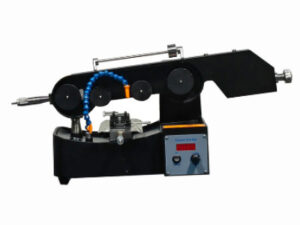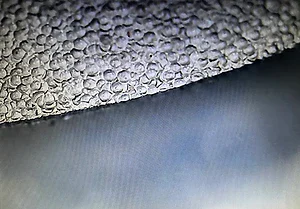Introduction
Cutting brittle materials requires a process that minimizes stress concentration, thermal gradients, and vibration. Materials such as sapphire, quartz, ceramics, silicon carbide, and high-purity glass respond poorly to traditional cutting tools. Excessive mechanical load or heat can introduce micro-cracks, edge chipping, or subsurface fracture—problems that become more severe as components become thinner and more complex.
Fine wire cutting technology addresses these challenges with a controlled low-pressure cutting interface, stable wire tension, and a minimal-heat removal mechanism. By reducing stress peaks and eliminating frictional heat, fine wire cutting enables reliable slicing even for ultra-brittle, high-value materials.
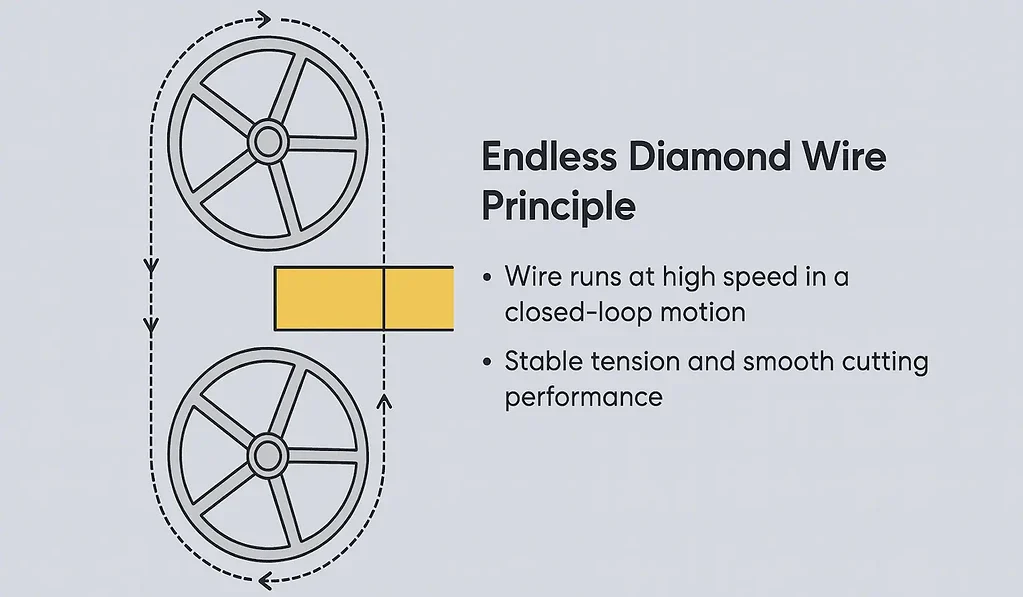
How to Cut Hard and Brittle Materials Efficiently
Fine wire cutting performance is governed by how the wire interacts with the material at a microscopic level. Brittle materials fracture through micro-crack propagation rather than plastic deformation, meaning stability and thermal control are essential.
Why Continuous Wire Motion Reduces Stress
Modern fine wire cutting systems use endless loop diamond wire, which moves continuously in a single direction at high linear speeds. This motion provides several engineering advantages:
- No reversal marks: Unlike spool-type wire, there is no back-and-forth motion to generate vibration or inconsistent abrasive loading.
- Uniform abrasive engagement: Each diamond particle contacts the surface with stable force.
- Reduced localized pressure: Continuous movement spreads cutting energy over thousands of abrasives.
- Superior stability: The wire path remains straight under servo-controlled tension.
These factors significantly reduce tensile stress at the cutting front, lowering the probability of crack initiation.
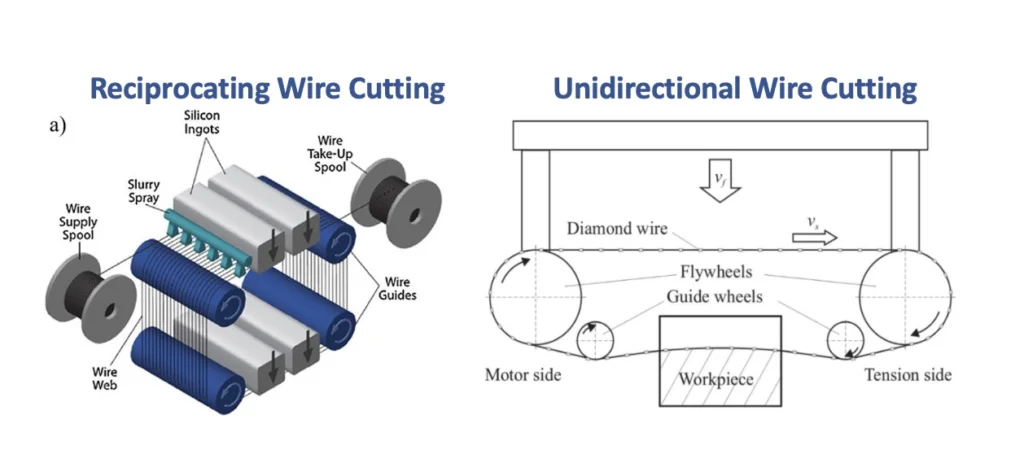
How Cooling Fluids Prevent Microcracks
Brittle materials are extremely sensitive to thermal gradients. Even minor temperature increases can introduce stress, leading to:
- micro-fractures
- edge defects
- warping on thin substrates
Fine wire cutting uses “cold cutting mechanics” supported by:
Cooling and Chip Evacuation Functions
- Lubrication reduces frictional heat
- Cooling liquids maintain material stability
- Chip removal prevents abrasive clogging
- Stable temperature ensures consistent crack-free slicing
This combination enables the wire to remove material through controlled micro-fracture, without forcing energy into the substrate.
Process Optimization in Fine Wire Cutting
Achieving precision and minimizing damage requires balancing three parameters: tension, wire speed, and feed rate.
Wire Tension
- Low tension is preferred for fragile glass and ceramics to avoid crack propagation.
- Higher tension improves straightness when cutting harder materials like SiC. Modern machines maintain real-time tension via servo or pneumatic systems, preventing deviation during long cutting cycles.
Wire Speed
Typical range: 50–80 m/s
- Lower speeds → smoother surfaces (optics, quartz)
- Higher speeds → faster material removal (SiC, sapphire)
Feed Rate
Feed speed must match material hardness:
- Optical glass: 5–10 mm/min
- Ceramics: moderate stable feeding
- Graphite: 15–30 mm/min
Incorrect feed speed increases wire vibration and micro-crack risk.
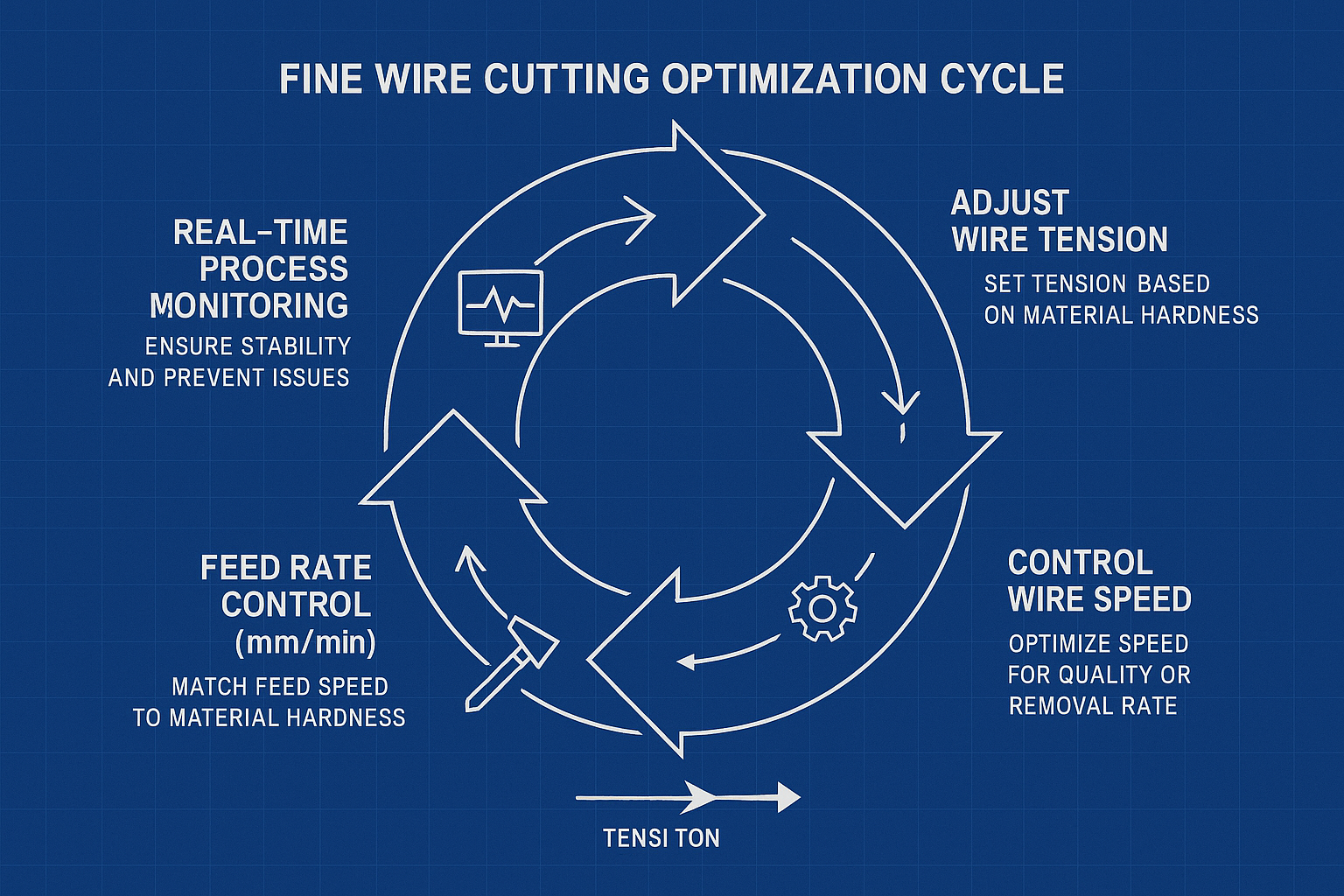
Comparison: Endless Wire vs Spool-Type Wire
| Feature | Endless Fine Wire | Spool-Type Wire |
|---|---|---|
| Motion | Continuous, one-direction | Reciprocating |
| Vibration | Very low | Higher |
| Thermal load | Minimal | Moderate |
| Surface finish | Smooth, stress-free | Reversal marks |
| Maintenance | Simple | Complex |
| Suitable materials | Sapphire, SiC, optics, ceramics | General purpose |
Fine wire cutting using endless loop systems provides the most stable cutting process for brittle, high-value materials.
Conclusion
Fine wire cutting enables low-damage, high-precision slicing of brittle materials by combining:
- continuous diamond wire motion
- optimized tension control
- stable feed systems
- minimal-heat abrasive mechanics
These characteristics ensure low stress, narrow kerf width, and superior surface integrity. For sapphire optics, semiconductor wafers, advanced ceramics, and specialty glass components, fine wire cutting provides a dependable solution for both research facilities and high-volume production lines.
👉 Explore our full line of precision wire cutting solutions → https://www.endlesswiresaw.com/wire-saws/
FAQ — Fine Wire Cutting for Brittle Materials
1. Why is fine wire cutting suitable for brittle materials?
Fine wire cutting produces low mechanical stress and negligible heat, preventing micro-cracks and edge chipping. Its continuous wire motion provides stable abrasive contact ideal for ceramics, glass, quartz, and sapphire.
2. How does continuous wire motion improve cutting quality?
Continuous loop motion eliminates reversal shock, maintains uniform abrasive force, and reduces vibration. This results in smoother surfaces and consistent cutting paths.
3. Does cooling fluid significantly reduce crack formation?
Yes. Cooling fluid stabilizes temperature, reduces frictional heat, and removes chips. These factors are critical in preventing thermal-induced micro-fractures in brittle substrates.
4. What parameters most affect brittle-material cutting?
Wire tension, linear wire speed, and feed rate determine surface smoothness, kerf width, and crack formation. Improper parameter balance can significantly increase damage depth.
5. Can fine wire cutting handle ultra-hard materials like SiC or sapphire?
Yes. When combined with precise tension control and appropriate wire speeds, fine wire cutting can reliably slice SiC, sapphire, and other extremely hard materials with minimal kerf loss.



